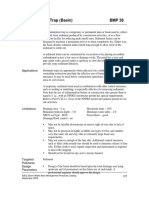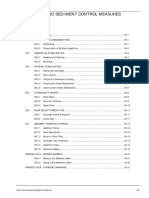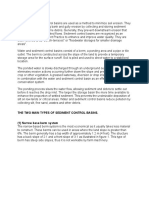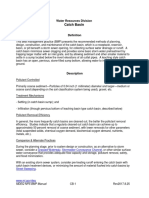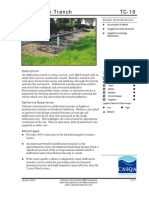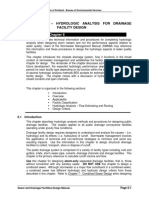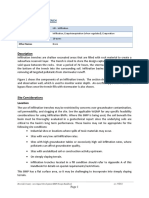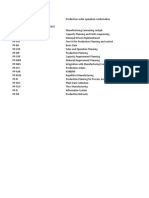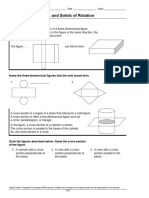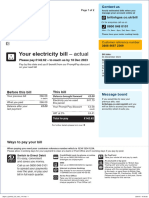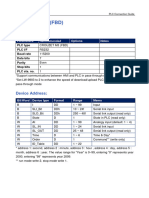Sediment Basin
Objectives EC SE TR WE NS WM
SE-2
Erosion Control Sediment Control Tracking Control Wind Erosion Control Non-Stormwater Management Control Waste Management and Materials Pollution Control
Primary Objective Secondary Objective
Legend:
Targeted Constituents
Description and Purpose A sediment basin is a temporary basin formed by excavation or by constructing an embankment so that sediment-laden runoff is temporarily detained under quiescent conditions, allowing sediment to settle out before the runoff is discharged. Suitable Applications Sediment basins may be suitable for use on larger projects with sufficient space for constructing the basin. Sediment basins should be considered for use: Where sediment-laden water may enter the drainage system or watercourses On construction projects with disturbed areas during the rainy season At the outlet of disturbed watersheds between 5 acres and 75 acres At the outlet of large disturbed watersheds, as necessary Where post construction detention basins are required In association with dikes, temporary channels, and pipes used to convey runoff from disturbed areas Limitations Sediment basins must be installed only within the property limits and where failure of the structure will not result in loss of life, damage to homes or buildings, or interruption of use or service of
January 2003 Errata 9-04 California Stormwater BMP Handbook Construction www.cabmphandbooks.com
Sediment Nutrients Trash Metals Bacteria Oil and Grease Organics Potential Alternatives SE-3 Sediment Trap (for smaller areas)
1 of 12
�SE-2
Sediment Basin
public roads or utilities. In addition, sediment basins are attractive to children and can be very dangerous. Local ordinances regarding health and safety must be adhered to. If fencing of the basin is required, the type of fence and its location should be shown in the SWPPP and in the construction specifications. Generally, sediment basins are limited to drainage areas of 5 acres or more, but not appropriate for drainage areas greater than 75 acres. Sediment basins may become an attractive nuisance and care must be taken to adhere to all safety practices. If safety is a concern, basin may require protective fencing. Sediment basins designed according to this handbook are only practically effective in removing sediment down to about the medium silt size fraction. Sediment-laden runoff with smaller size fractions (fine silt and clay) may not be adequately treated unless chemical treatment is used in addition to the sediment basin. Sites with very fine sediments (fine silt and clay) may require longer detention times for effective sediment removal. Basins with a height of 25 ft or more or an impounding capacity of 50 ac-ft or more must obtain approval from Division of Safety of Dams. Standing water may cause mosquitoes or other pests to breed. Basins require large surface areas to permit settling of sediment. Size may be limited by the available area. Implementation General A sediment basin is a controlled stormwater release structure formed by excavation or by construction of an embankment of compacted soil across a drainage way, or other suitable location. It is intended to trap sediment before it leaves the construction site. The basin is a temporary measure with a design life of 12 to 28 months in most cases and is to be maintained until the site area is permanently protected against erosion or a permanent detention basin is constructed. Sediment basins are suitable for nearly all types of construction projects. Whenever possible, construct the sediment basins before clearing and grading work begins. Basins should be located at the stormwater outlet from the site but not in any natural or undisturbed stream. A typical application would include temporary dikes, pipes, and/or channels to divert runoff to the basin inlet. Many development projects in California will be required by local ordinances to provide a stormwater detention basin for post-construction flood control, desilting, or stormwater pollution control. A temporary sediment basin may be constructed by rough grading the postconstruction control basins early in the project. Sediment basins trap 70-80 % of the sediment that flows into them if designed according to this handbook. Therefore, they should be used in conjunction with erosion control practices such as
2 of 12
California Stormwater BMP Handbook Construction www.cabmphandbooks.com
January 2003 Errata 9-04
�Sediment Basin
SE-2
temporary seeding, mulching, diversion dikes, etc., to reduce the amount of sediment flowing into the basin. Planning To improve the effectiveness of the basin, it should be located to intercept runoff from the largest possible amount of disturbed area. The best locations are generally low areas. Drainage into the basin can be improved by the use of earth dikes and drainage swales (see BMP EC-9). The basin must not be located in a stream but it should be located to trap sediment-laden runoff before it enters the stream. The basin should not be located where its failure would result in the loss of life or interruption of the use or service of public utilities or roads. Construct before clearing and grading work begins when feasible. Do not locate in a stream. Basin sites should be located where failure of the structure will not cause loss of life, damage to homes or buildings, or interruption of use or service of public roads or utilities. Large basins are subject to state and local dam safety requirements. Limit the contributing area to the sediment basin to only the runoff from the disturbed soil areas. Use temporary concentrated flow conveyance controls to divert runoff from undisturbed areas away from the sediment basin. The basin should be located: (1) by excavating a suitable area or where a low embankment can be constructed across a swale, (2) where post-construction (permanent) detention basins will be constructed, and (3) where the basins can be maintained on a year-round basis to provide access for maintenance, including sediment removal and sediment stockpiling in a protected area, and to maintain the basin to provide the required capacity. Design Sediment basins must be designed in accordance with Section A of the State of California NPDES General Permit for Stormwater Discharges Associated with Construction Activities (General Permit) where sediment basins are the only control measure proposed for the site. If there is insufficient area to construct a sediment basin in accordance with the General Permit requirements, then the alternate design standards specified herein may be used. Sediment basins designed per the General Permit shall be designed as follows: Option 1: Pursuant to local ordinance for sediment basin design and maintenance, provided that the design efficiency is as protective or more protective of water quality than Option 3. OR Option 2: Sediment basin(s), as measured from the bottom of the basin to the principal outlet, shall have at least a capacity equivalent to 3,600 cubic feet (133 yd3) of storage per acre draining into the sediment basin. The length of the basin shall be more than twice the width of the basin. The
January 2003 Errata 9-04
California Stormwater BMP Handbook Construction www.cabmphandbooks.com
3 of 12
�SE-2
Sediment Basin
length is determined by measuring the distance between the inlet and the outlet; and the depth must not be less than 3 ft nor greater than 5 ft for safety reasons and for maximum efficiency. OR Option 3: Sediment basin(s) shall be designed using the standard equation: As=1.2Q/Vs Where: As = Minimum surface area for trapping soil particles of a certain size Vs = Settling velocity of the design particle size chosen Q=CIA Where Q = Discharge rate measured in cubic feet per second C = Runoff coefficient I = Precipitation intensity for the 10-year, 6-hour rain event A = Area draining into the sediment basin in acres The design particle size shall be the smallest soil grain size determined by wet sieve analysis, or the fine silt sized (0.01 mm [or 0.0004 in.]) particle, and the Vs used shall be 100 percent of the calculated settling velocity. The length is determined by measuring the distance between the inlet and the outlet; the length shall be more than twice the dimension as the width; the depth shall not be less than 3 ft nor greater than 5 ft for safety reasons and for maximum efficiency (2 ft of sediment storage, 2 ft of capacity). The basin(s) shall be located on the site where it can be maintained on a year-round basis and shall be maintained on a schedule to retain the 2 ft of capacity. OR Option 4: The use of an equivalent surface area design or equation, provided that the design efficiency is as protective or more protective of water quality than Option 3. (Eq. 1)
4 of 12
California Stormwater BMP Handbook Construction www.cabmphandbooks.com
January 2003 Errata 9-04
�Sediment Basin
Other design considerations are:
SE-2
The volume of the settling zone should be sized to capture runoff from a 2-year storm or other appropriate design storms specified by the local agency. A detention time of 24 to 40 hours should allow 70 to 80 % of sediment to settle. The basin volume consists of two zones: A sediment storage zone at least 1 ft deep. A settling zone at least 2 ft deep.
The length to settling depth ratio (L/SD) should be less than 200. Sediment basins are best used in conjunction with erosion controls. Sediment basins that will be used as the only means of treatment, without upstream erosion and sediment controls, must be designed according to the four options required by the General Permit (see Options 1-4 above). Sediment basins that are used in conjunction with upstream erosion and sediment controls should be designed to have a capacity equivalent to 67 yd3 of sediment storage per acre of contributory area. The length of the basin should be more than twice the width of the basin; the length should be determined by measuring the distance between the inlet and the outlet. The depth must be no less than 3 ft. Basins with an impounding levee greater than 4.5 ft tall, measured from the lowest point to the impounding area to the highest point of the levee, and basins capable of impounding more than 35,000 ft3, should be designed by a Registered Civil Engineer. The design should include maintenance requirements, including sediment and vegetation removal, to ensure continuous function of the basin outlet and bypass structures. Basins should be designed to drain within 72 hours following storm events. If a basin fails to drain within 72 hours, it must be pumped dry. Sediment basins, regardless of size and storage volume, should include features to accommodate overflow or bypass flows that exceed the design storm event. Include an emergency spillway to accommodate flows not carried by the principal spillway. The spillway should consist of an open channel (earthen or vegetated) over undisturbed material (not fill) or constructed of a non-erodible riprap. The spillway control section, which is a level portion of the spillway channel at the highest elevation in the channel, should be a minimum of 20 ft in length.
Rock or vegetation should be used to protect the basin inlet and slopes against erosion. A forebay, constructed upstream of the basin may be provided to remove debris and larger particles.
January 2003 Errata 9-04
California Stormwater BMP Handbook Construction www.cabmphandbooks.com
5 of 12
�SE-2
Sediment Basin
The outflow from the sediment basin should be provided with velocity dissipation devices (see BMP EC-10) to prevent erosion and scouring of the embankment and channel. Basin inlets should be located to maximize travel distance to the basin outlet. The principal outlet should consist of a corrugated metal, high density polyethylene (HDPE), or reinforced concrete riser pipe with dewatering holes and an anti-vortex device and trash rack attached to the top of the riser, to prevent floating debris from flowing out of the basin or obstructing the system. This principal structure should be designed to accommodate the inflow design storm. A rock pile or rock-filled gabions can serve as alternatives to the debris screen; although the designer should be aware of the potential for extra maintenance involved should the pore spaces in the rock pile clog. The outlet structure should be placed on a firm, smooth foundation with the base securely anchored with concrete or other means to prevent floatation. Attach riser pipe (watertight connection) to a horizontal pipe (barrel). Provide anti-seep collars on the barrel. Cleanout level should be clearly marked on the riser pipe. Proper hydraulic design of the outlet is critical to achieving the desired performance of the basin. The outlet should be designed to drain the basin within 24 to 72 hours (also referred to as drawdown time). The 24-hour limit is specified to provide adequate settling time; the 72-hour limit is specified to mitigate vector control concerns. The two most common outlet problems that occur are: (1) the capacity of the outlet is too great resulting in only partial filling of the basin and drawdown time less than designed for; and (2) the outlet clogs because it is not adequately protected against trash and debris. To avoid these problems, the following outlet types are recommended for use: (1) a single orifice outlet with or without the protection of a riser pipe, and (2) perforated riser. Design guidance for single orifice and perforated riser outlets follow: Flow Control Using a Single Orifice At The Bottom Of The Basin (Figure 1): The outlet control orifice should be sized using the following equation:
a=
where:
2 A( H Ho) 0.5 (7 x10 5 ) A( H Ho) 0.5 = CT 3600CT (2 g ) 0.5
(Eq. 2)
a = area of orifice (ft2) A = surface area of the basin at mid elevation (ft2) C = orifice coefficient T = drawdown time of full basin (hrs)
6 of 12 California Stormwater BMP Handbook Construction www.cabmphandbooks.com January 2003 Errata 9-04
�Sediment Basin
g = gravity (32.2 ft/s2) H = elevation when the basin is full (ft) Ho = final elevation when basin is empty (ft) With a drawdown time of 40 hours, the equation becomes:
SE-2
a=
-
(1.75 x106 ) A( H Ho)0.5 C
(Eq. 3)
Flow Control Using Multiple Orifices (see Figure2):
at =
2 A(hmax ) 3600CT (2 g[hmax hcentroid of orifices ]) 0.5
(Eq. 4)
With terms as described above except: at = total area of orifices hmax = maximum height from lowest orifice to the maximum water surface (ft) hcentroid of orifices = height from the lowest orifice to the centroid of the orifice configuration (ft) Allocate the orifices evenly on two rows; separate the holes by 3x hole diameter vertically, and by 120 degrees horizontally (refer to Figure 2). Because basins are not maintained for infiltration, water loss by infiltration should be disregarded when designing the hydraulic capacity of the outlet structure. Care must be taken in the selection of "C"; 0.60 is most often recommended and used. However, based on actual tests, GKY (1989), "Outlet Hydraulics of Extended Detention Facilities for Northern Virginia Planning District Commission", recommends the following: C = 0.66 for thin materials; where the thickness is equal to or less than the orifice diameter, or C = 0.80 when the material is thicker than the orifice diameter Installation Securely anchor and install an anti-seep collar on the outlet pipe/riser and provide an emergency spillway for passing major floods (see local flood control agency). Areas under embankments must be cleared and stripped of vegetation. Chain link fencing should be provided around each sediment basin to prevent unauthorized entry to the basin or if safety is a concern.
January 2003 Errata 9-04
California Stormwater BMP Handbook Construction www.cabmphandbooks.com
7 of 12
�SE-2
Sediment Basin
Costs Average annual costs for installation and maintenance (2 year useful life) are: Basin less than 50,000 ft3: Range, $0.24 - $1.58/ft3. Average, $0.73 per ft3. $400 - $2,400, $1,200 average per drainage acre. Basin size greater than 50,000 ft3: Range, $0.12 $0.48/ft3. Average, $0.36 per ft3. $200 $800, $600 average per drainage acre. Inspection and Maintenance Inspect BMPs prior to forecast rain, daily during extended rain events, after rain events, weekly during the rainy season, and at two-week intervals during the non-rainy season. Examine basin banks for seepage and structural soundness. Check inlet and outlet structures and spillway for any damage or obstructions. Repair damage and remove obstructions as needed. Check inlet and outlet area for erosion and stabilize if required. Check fencing for damage and repair as needed. Sediment that accumulates in the BMP must be periodically removed in order to maintain BMP effectiveness. Sediment should be removed when sediment accumulation reaches onehalf the designated sediment storage volume. Sediment removed during maintenance may be incorporated into earthwork on the site or disposed of at appropriate locations. Remove standing water from basin within 72 hours after accumulation. BMPs that require dewatering shall be continuously attended while dewatering takes place. Dewatering BMPs shall be implemented at all times during dewatering activities. To minimize vector production: Remove accumulation of live and dead floating vegetation in basins during every inspection. Remove excessive emergent and perimeter vegetation as needed or as advised by local or state vector control agencies.
References A Current Assessment of Urban Best Management Practices: Techniques for Reducing Nonpoint Source Pollution in the Coastal Zones, Metropolitan Washington Council of Governments, March 1992. Draft-Sedimentation and Erosion Control, an Inventory of Current Practices, USEPA. April 1990. Guidelines for the Design and Construction of Small Embankment Dams, Division of Safety of Dams, California Department of Water Resources, March 1986.
8 of 12
California Stormwater BMP Handbook Construction www.cabmphandbooks.com
January 2003 Errata 9-04
�Sediment Basin
SE-2
Manual of Standards of Erosion and Sediment Control Measures, Association of Bay Area Governments, May 1995. McLean, J., 2000. Mosquitoes in Constructed Wetlands: A Management Bugaboo? In T.R. Schueler and H.K. Holland [eds.], The Practice of Watershed Protection. pp. 29-33. Center for Watershed Protection, Ellicott City, MD, 2000. Metzger, M.E., D. F. Messer, C. L. Beitia, C. M. Myers, and V. L. Kramer. The dark site of stormwater runoff management: disease vectors associated with structural BMPs, 2002. National Management Measures to Control Nonpoint Source Pollution from Urban Areas, United States Environmental Protection Agency, 2002. Proposed Guidance Specifying Management Measures for Sources of Nonpoint Pollution in Coastal Water, Work Group-Working Paper, USEPA, April 1992. Stormwater Quality Handbooks - Construction Site Best Management Practices (BMPs) Manual, State of California Department of Transportation (Caltrans), November 2000. Stormwater Management of the Puget Sound Basin, Technical Manual, Publication #91-75, Washington State Department of Ecology, February 1992. U.S. Environmental Protection Agency (USEPA). Guidance Specifying Management Measures for Nonpoint Pollution in Coastal Waters. EPA 840-B-9-002. U.S. Environmental Protection Agency, Office of Water, Washington, DC, 1993 Water Quality Management Plan for the Lake Tahoe Region, Volume II Handbook of Management Practices, Tahoe Regional Planning Agency, November 1988.
January 2003 Errata 9-04
California Stormwater BMP Handbook Construction www.cabmphandbooks.com
9 of 12
�SE-2
Sediment Basin
10 of 12
California Stormwater BMP Handbook Construction www.cabmphandbooks.com
January 2003 Errata 9-04
�Sediment Basin
SE-2
January 2003 Errata 9-04
California Stormwater BMP Handbook Construction www.cabmphandbooks.com
11 of 12
�SE-2
Sediment Basin
12 of 12
California Stormwater BMP Handbook Construction www.cabmphandbooks.com
January 2003 Errata 9-04


